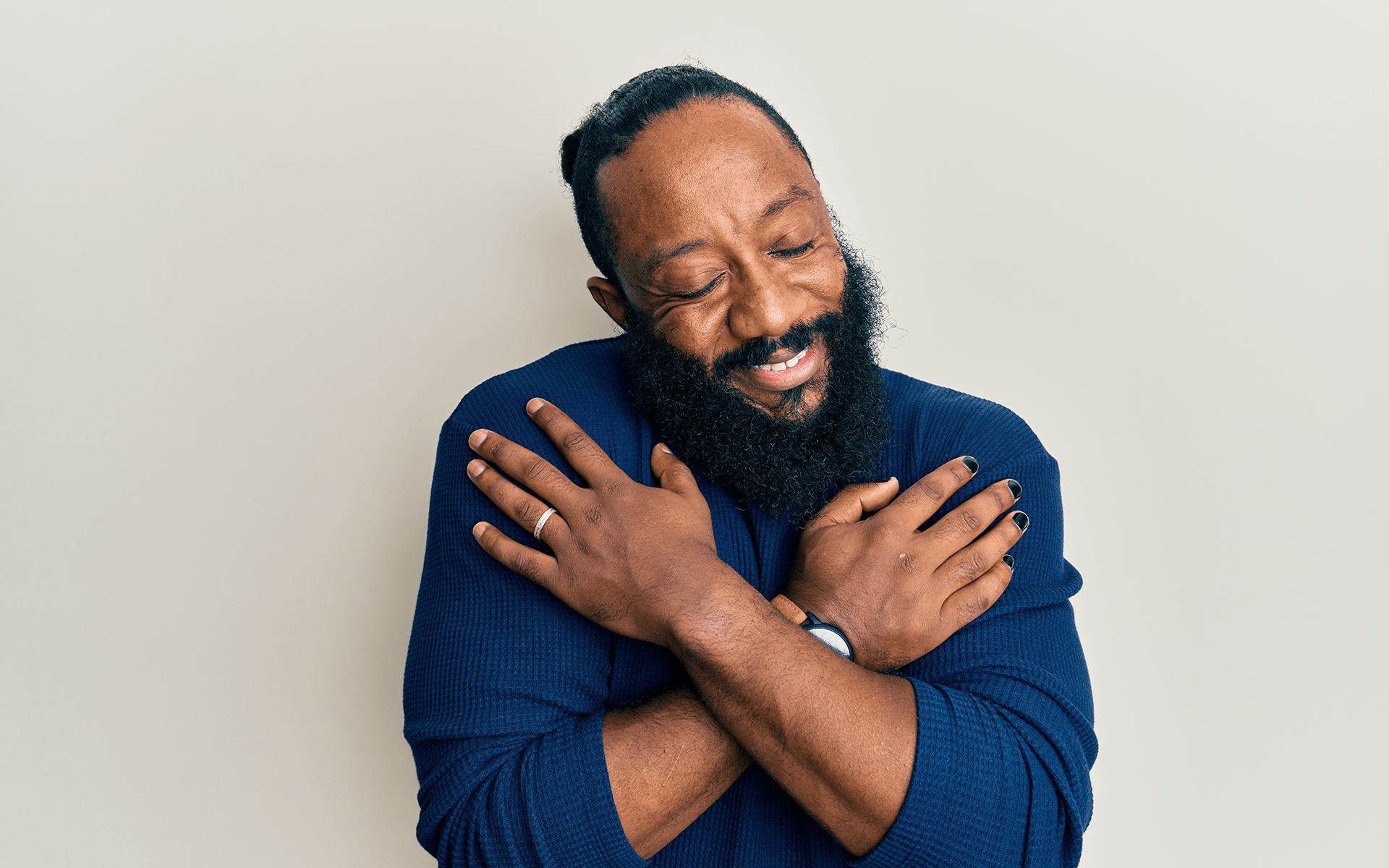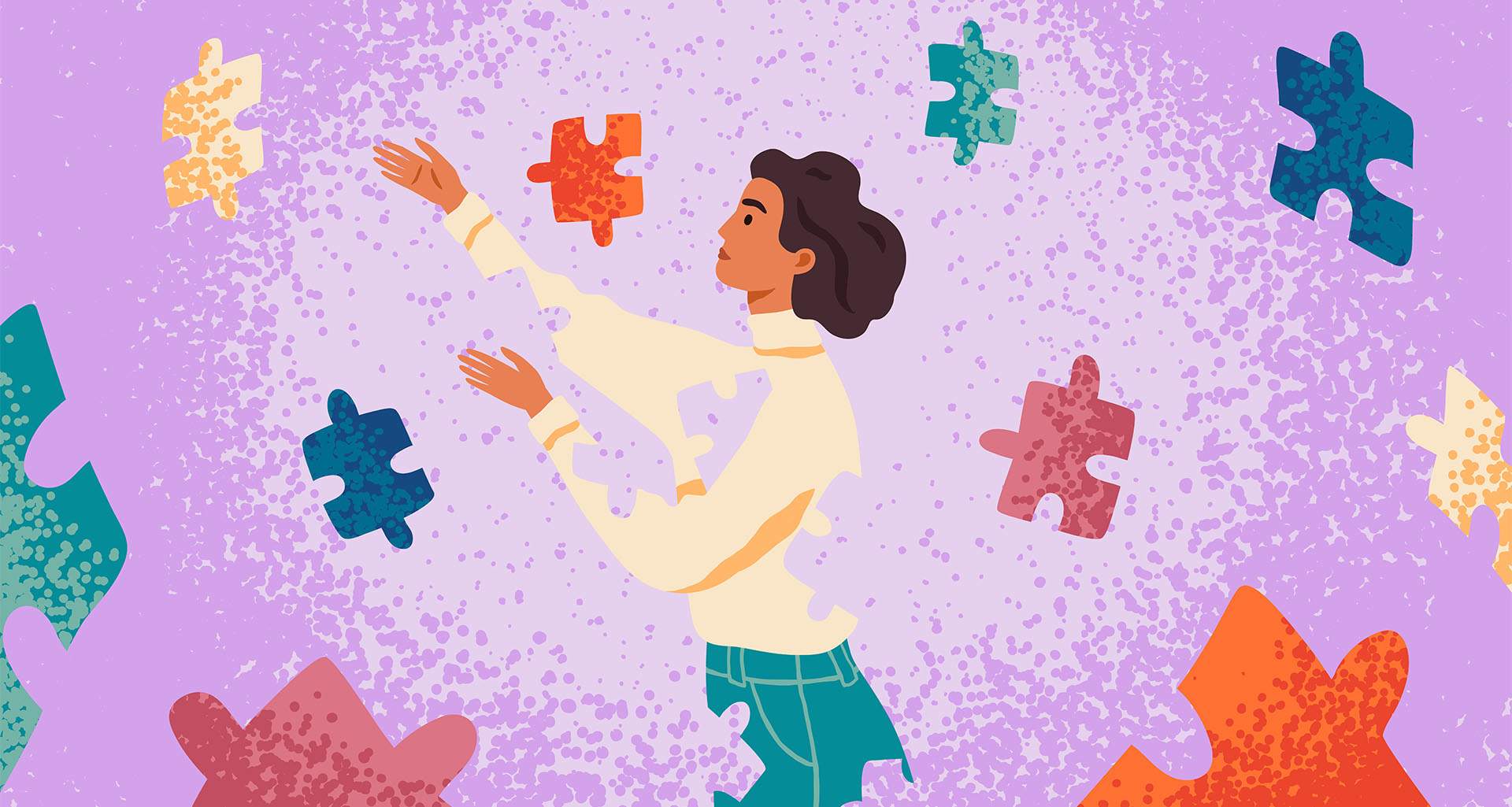“Look at all these beautiful bodies,” the instructor shouted over the music. The beat of the song made my whole body vibrate as the bass swelled in a rhythmic crescendo. I concentrated on the instructor’s movements, mimicking the flawlessly choreographed blend of international dance. All around me, bodies gyrated, a wave of arms swinging in unison, and joyful shouts echoing off the gym walls.
I swallowed hard, blinking away tears. It felt as though I was giving my body a chance to catch up to the sadness I’d been suppressing throughout the pandemic. I had recently dusted off my gym membership after the worst of the lockdowns, and it was my first in-person Zumba class in almost two years. I had forgotten what it was like to dance in rhythm with a roomful of people, and months of tension melted away with each boom of the bass.
“Burnout” is a tame descriptor of what many of us have been coping with since early 2020—an overwhelming feeling of “drowning” may better exemplify our collective experience. I’ve faced job loss, a long search for work in a global pandemic, and the unattainable balancing act of working from home and parenting my kids through virtual school. Other people I know have worked as nurses in packed ICUs, faced delayed cancer treatments, grieved loved ones without funerals, and endured financial insecurity.
Rethinking Burnout
The World Health Organization (WHO) defines the phenomenon of burnout as being characterized by three things: feelings of exhaustion, reduced productivity at work, and a sense of detachment from one’s job. You probably don’t need me to define burnout for you, though. We know it when we feel it. It’s the overwhelming to-do list, the mental load and physical exhaustion, and the inability to find joy in our daily lives.
In essence, burnout can feel a lot like depression, but the key difference is that it relates directly to the work we do. The WHO states that burnout can’t be applied to describe experiences we have outside of an occupational context, but it will be interesting to see how this official definition changes after COVID-19.
The pandemic has forced us to define “work” in a much broader way. As the world screeched to a halt, the lines between the different parts of our lives blurred and then disappeared altogether. Work took up every waking hour, as I tried to squeeze in time at the “office” when my kids didn’t need me to address tech issues, help with homework, and support them with the emotional challenges they faced during lockdown.
“It’s a very Western approach to separate work from everything else that you do, as opposed to seeing your entire life as holistic,” says Jenée Johnson, a mindfulness, trauma, and racial equity program leader in the San Francisco Department of Public Health. Johnson maintains that our jobs have never been separate from the rest of our lives. “What you do to express your gifts, talents, and abilities is not different…from your life.”
What Does Healing Really Look Like?
In my experience of burnout, this dichotomy of work/life has led me to a systematic approach to my exhaustion. I’ve compartmentalized all the parts of my life and tackled the problem through a set of objectives and tactics: drink a green smoothie in the morning, 10 minutes of meditation on my lunch break, 150 minutes of moderate to intense exercise each week, yoga, regular massages… The list of things I thought I had to do is endless. If I added up how long it would take to do all these activities, I’d likely run out of time in my day to work, sleep, and care for my family—not to mention the financial burden that is unfeasible for many people.
Like a server in a busy restaurant, I’ve tried to balance all my plates—work, family, relationships, self-care, hobbies, finances, caregiving—while conveniently ignoring the heart of the issue: that I’m not supposed to be carrying so many plates in the first place. The unfortunate result is that the weight of responsibility is placed on me, the individual, and the message I’ve internalized is that if I’m struggling, I’m just not trying hard enough.
Like a server in a busy restaurant, I’ve tried to balance all my plates—work, family, relationships, self-care, hobbies, finances, caregiving—while conveniently ignoring the heart of the issue: that I’m not supposed to be carrying so many plates in the first place.
In the book Burnout: The Secret to Unlocking the Stress Cycle, coauthors Emily and Amelia Nagoski argue that the problem is not that we aren’t trying; it’s that wellness has been sold to us as something achievable through a set of specific goals. They propose instead that wellness is “a state of action—it is the freedom to move fluidly through the cyclical, oscillating experiences of being human.”
For me, the most relevant part of their statement to my own experience of healing from burnout is the verb “to move.” If we want our bodies to release stress and not get stuck along the way, we must literally move through what Emily and Amelia call our emotional tunnels. How do we do that? Johnson uses the analogy of a zebra running from a lion: “The lion’s coming, and [the zebra] runs, runs, runs, gets away, and what does he do? He stops and he shakes it off, and then he goes back to eating the grass.”
Moving Through Our Emotional Tunnels
Shake it off. It sounds like a simple directive (and a great Taylor Swift song), but it’s a process that takes time and a bit of trial and error. None of us are accustomed to embodying our emotions; instead, we put them in a cognitive context, and try to think our way through stress, using to-do lists, time management apps, and a carousel of self-care tips pushed at us by the wellness industry.
I’ve tried all those strategies, and while some of them have been moderately effective in the past, the pandemic put a halt to my usual go-to activities. I had to find new ways to move through my emotions. I’ve been fortunate that even in the worst of the lockdowns, I’ve been able to get outside. Time in nature has been a saving grace, and short walks in my local ravine have given me a chance to slow down and savor my solitude. Many people tried their hand at their first vegetable garden, discovering the immense pleasure we can derive from digging in the dirt. Time outdoors connects us to all our bodily senses, as we ground ourselves in the earth through touch, smell, sound, and—once you get a chance to reap your garden’s harvest—taste.
If Zumba or other choreographed dancing is not your thing, movement is open to us in all different forms. Certain types of traditional yoga practices use shaking or vibrating the body to release muscle tension and to regulate the body’s fight-or-flight response. You don’t need a special yoga class to practice this—get up and jiggle around for five minutes. It may feel silly at first, but I’ve always loved the wave of calm that washes over me when I’m done. Tensing and releasing parts of the body, like the neck, shoulders, and hands, can also help to release tension.
When All Else Fails, Be Human
Many of the tips for embodying our emotions work with vibration, movement, and sound, because those are the ways we stimulate our vagus nerve—the nerve that connects our brain to organs throughout our body. It also performs key functions for our parasympathetic nervous system, helping us to move from “fight or flight” to “rest and digest.” Activities to stimulate the vagus nerve include deep and slow breathing (letting your exhale be longer than your inhale can have an especially soothing effect), singing, humming, or chanting, and body movement. During times of intense lockdown stress, my kids and I practiced humming to defuse tension—it usually led to fits of giggles, which also had its benefits.
When I had exhausted all other coping strategies and still felt stuck in my emotions, I let the tears flow. Crying is an underrated strategy for helping our bodies cope with stress hormones, and scientists have identified that “emotional tears” (rather than tears that may fall in cold weather or because of dust in the eye) may have a different chemical composition and can trigger the body to release oxytocin and endorphins. These are the loving and calming hormones that ease our physical and emotional pain.
If we reframe wellness as the freedom to be human, rather than as an unattainable to-do list, we can learn to build the capacity to withstand emotional distress—without getting stuck along the way.
While burnout is a societal problem that calls for systemic change, these individual coping tools can help us take back some of our agency. If we reframe wellness as the freedom to be human, rather than as an unattainable to-do list, we can learn to build the capacity to withstand emotional distress—without getting stuck along the way.
Dancing to Freedom
Women are particularly vulnerable to the experience of burnout because of higher rates of PTSD, depression, anxiety, and gender-based social discrimination, and for some groups, racial trauma. All of this underscores the importance of (re) learning to feel freedom and joy in our bodies. One example: Jenée Johnson also facilitates the Femme! dance program, created by author and entrepreneur Bernadette Pleasant. The class is designed for women to reclaim their feminine power in the way they walk through the world. Participants start with gentle grounding and awakening exercises, followed by an “emotional tour” through a range of human feelings— joy, rage, sensuality—and end with time for reflection and meditation. Choreographed and free dance movements are set to drumming that matches the pulse of the human heartbeat, grounding women in the ancient wisdom of their bodies. If the Femme! class is not offered in your community, seek out other body-positive dance classes that incorporate drumming or free dance.
READ MORE
How Integrity Can Heal Burnout
Evidence from healthcare worker communities shows how strengthening our moral resilience, with support by mindfulness, can help us avoid overwhelm at work.
Read More
A 12-Minute Meditation to Remind Yourself That You Are Enough
In this guided meditation, Jenée Johnson offers affirmations to help you remember your inherent worth and reconnect with compassion.
Read More
The Difference Between Healing and Fixing in the Practice of Mindfulness
We often hear that mindfulness doesn’t “work” when we use it as a means to an end. Here, Genevieve Tregor explains why mindfulness loses its impact when we use it in small “bandage” doses instead of weaving the practice into our daily lives.
Read More









